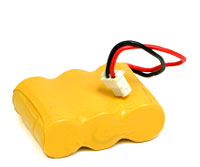In the last 20 years, the United States has essentially dismantled its industrial base, moving production of consumer goods south to Mexico and east to Asia.
This has not only dramatically lowered the cost of goods, fueling a consumer boom; it has also helped make our economy less energy-intensive, and lowered our exposure to industrial waste.
But net gains for the environment and worker health have been imaginary. We’ve merely shifted the burdens of industrial production onto other lands and other people — most recently, China.

I think this is the most important political-ecological story of our time — made even more urgent by the specter of climate change (since for the climate, greenhouse-gas emissions from Huizhou, China, are just as damaging as those from Pittsburgh, Penn.). And I don’t know of any other publication covering it with more rigor than the Wall Street Journal.
It has been running great articles on how U.S. demand for cheap goods is triggering a surge in consumption of Chinese coal. And on Tuesday, it ran a great piece on how U.S. industry responded to the well-documented hazards of cadmium-battery manufacturing by simply moving production to China, creating a nightmare for workers there.
Here is the Journal:
Once widely manufactured in the West, [cadmium] batteries are now largely made in China, where the industry is sickening workers and poisoning the soil and water.
Europe has banned most cadmium batteries. Not so the U.S., where they’re "still widely used in toys, power tools, cordless phones and other gadgets." The article is worth reading in its entirety.

